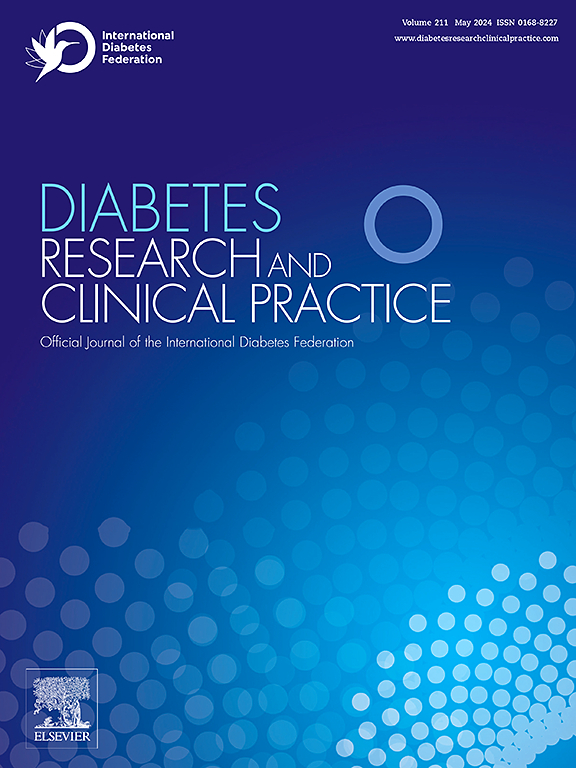Combined effects of time-restricted eating and exercise on short-term blood glucose management in individuals with Type 2 Diabetes Mellitus: The TREx study, a randomised controlled trial
IF 6.1
3区 医学
Q1 ENDOCRINOLOGY & METABOLISM
引用次数: 0
Abstract
Aims
Time-restricted eating (TRE) is a chrono-nutrition strategy where the daily ‘eating window’ is reduced to 8–10 h. We investigated the acute (14-h) effects of TRE, with and without post-meal exercise, on blood glucose and insulin concentrations in people with type 2 diabetes mellitus.
Methods
Fourteen participants (5 F, 9 M; HbA1c: 7.6 ± 1.0%) completed four conditions in this randomised crossover study: CON (eating window, 0800–2000 h), CON with exercise (CON + Ex; 0800–2000 h + 15 min walking at 60% VO2peak, 45 min post-meal), TRE (eating window 1000–1800 h), and TRE with exercise (TRE + Ex, 1000–1800 h + 15 min walking as per CON + Ex), with standardised meals. Venous blood samples were collected at 26-timepoints and analysed for glucose and insulin concentrations. Statistical analysis used linear mixed-effects models with P < 0.05.
Results
Reducing the eating window had little effect on plasma glucose 14-h area under the curve (AUC). Exercise reduced insulin 14-h AUC (P=0.01) with no additive effect of TRE.
Conclusion
Post-meal exercise lowered 14-h insulin AUC, neither 8-h TRE nor post-meal exercise altered 14-h blood glucose compared with 12-h eating window. Future work should focus on long-term effects of TRE combined with exercise for enhancing blood glucose in people with type 2 diabetes mellitus.
求助全文
约1分钟内获得全文
求助全文
来源期刊

Diabetes research and clinical practice
医学-内分泌学与代谢
CiteScore
10.30
自引率
3.90%
发文量
862
审稿时长
32 days
期刊介绍:
Diabetes Research and Clinical Practice is an international journal for health-care providers and clinically oriented researchers that publishes high-quality original research articles and expert reviews in diabetes and related areas. The role of the journal is to provide a venue for dissemination of knowledge and discussion of topics related to diabetes clinical research and patient care. Topics of focus include translational science, genetics, immunology, nutrition, psychosocial research, epidemiology, prevention, socio-economic research, complications, new treatments, technologies and therapy.
 求助内容:
求助内容: 应助结果提醒方式:
应助结果提醒方式:


